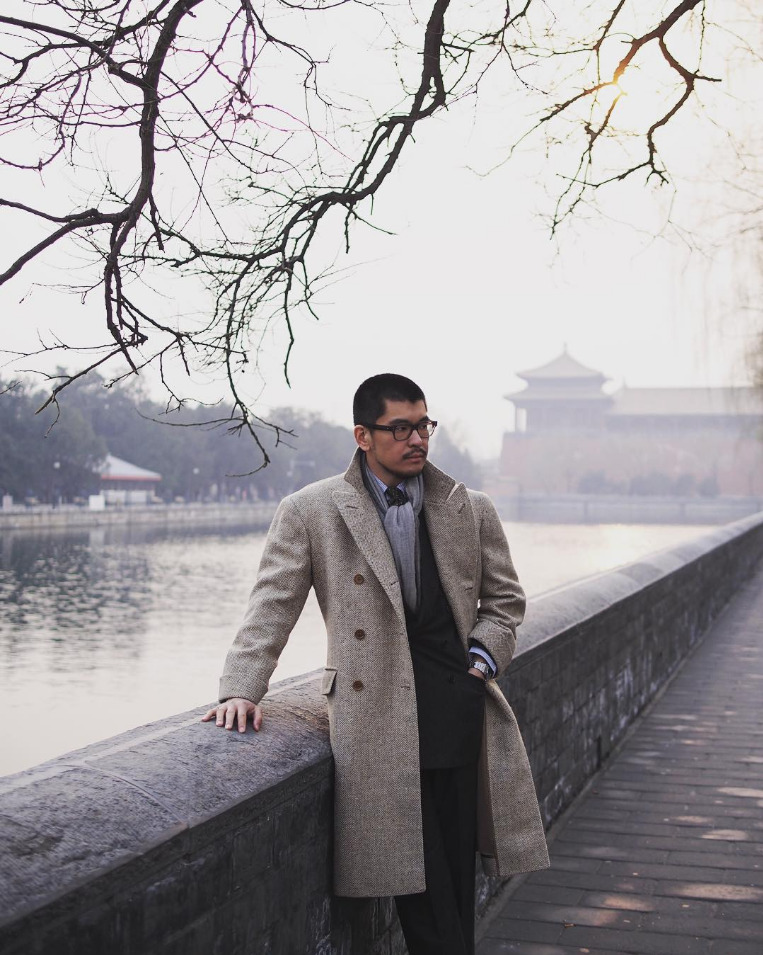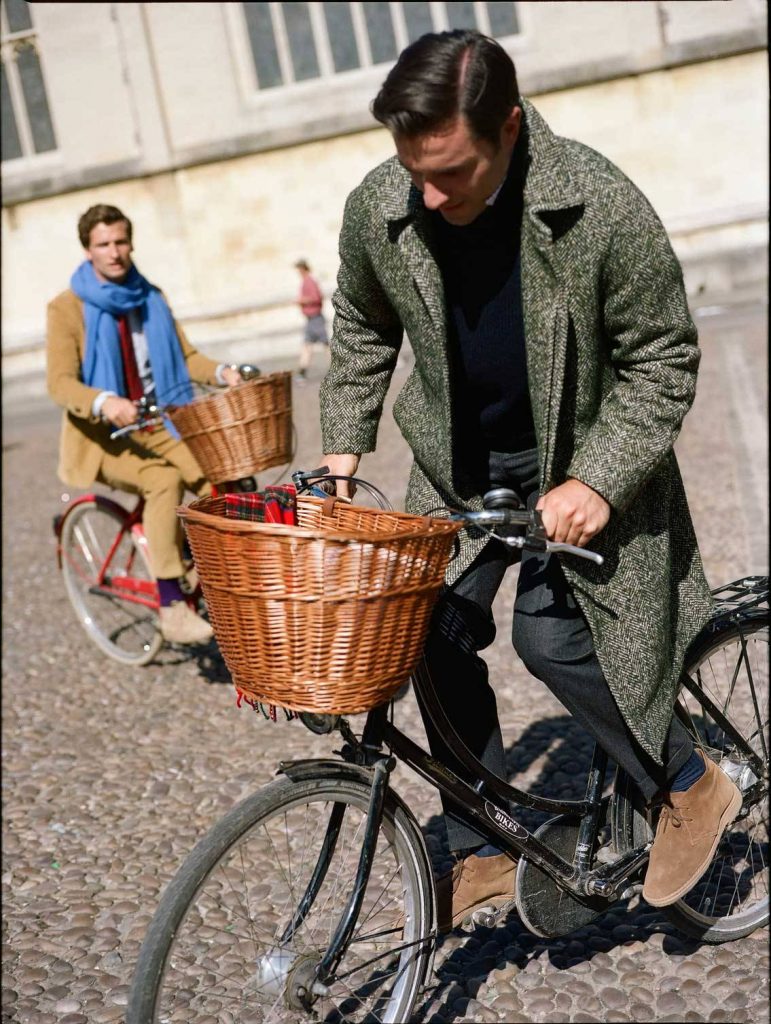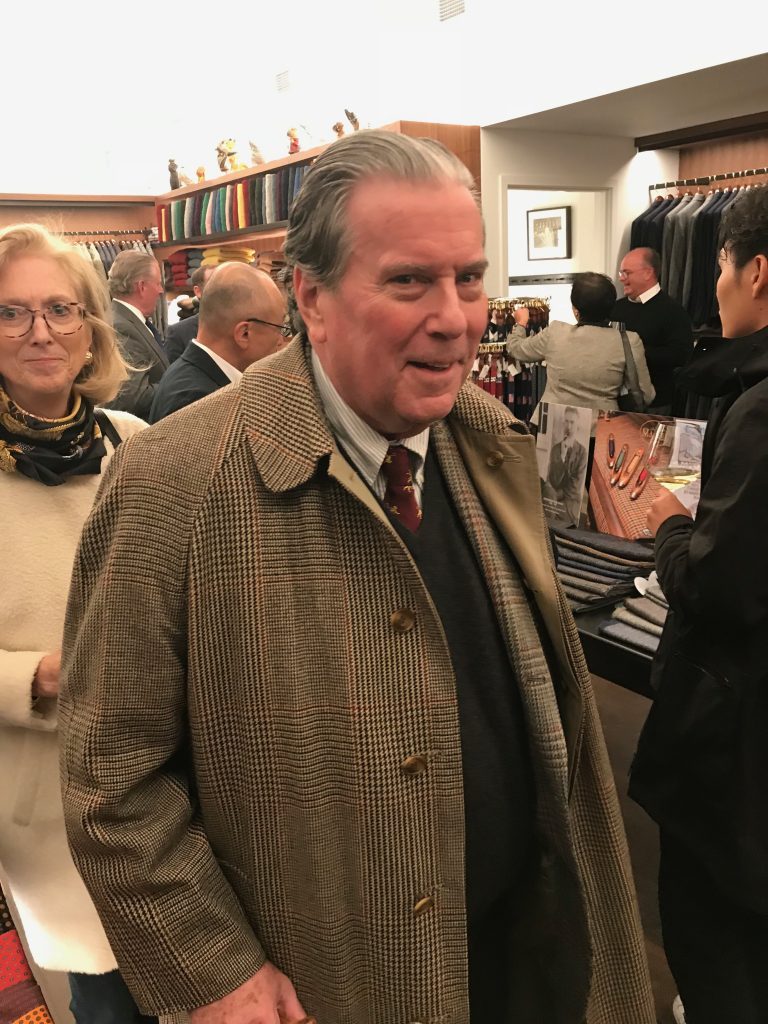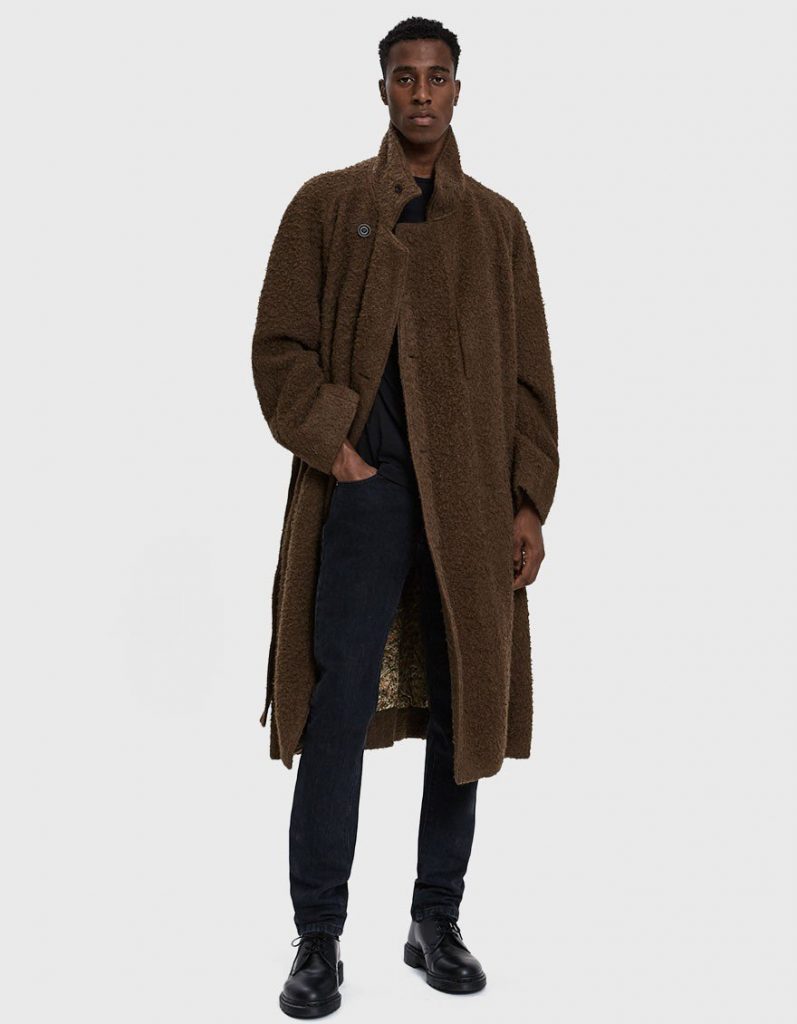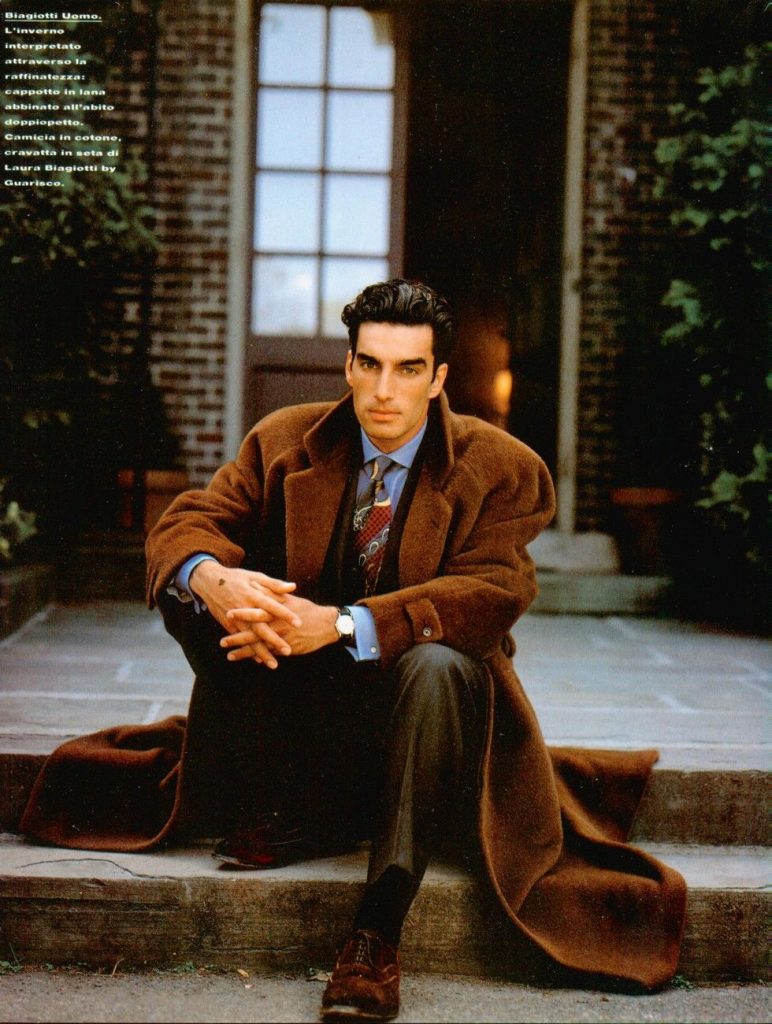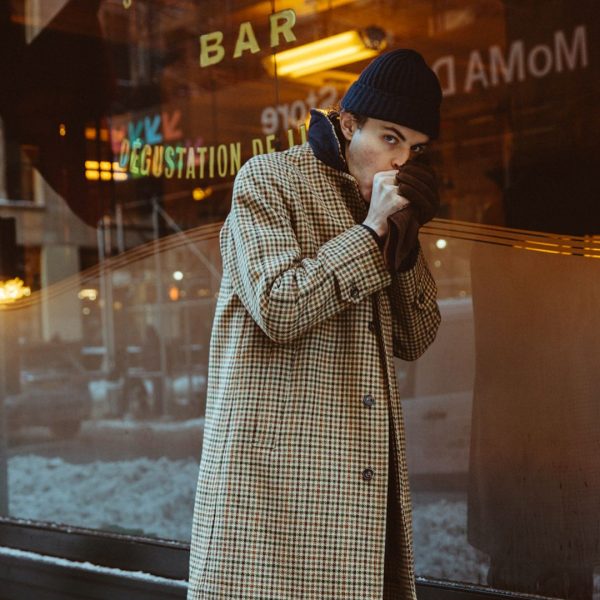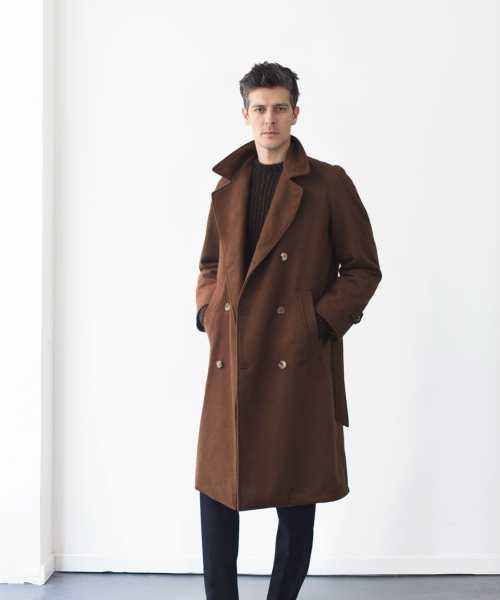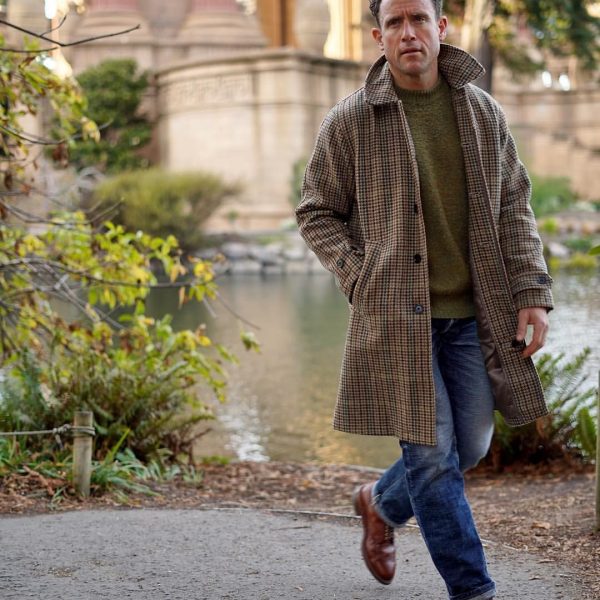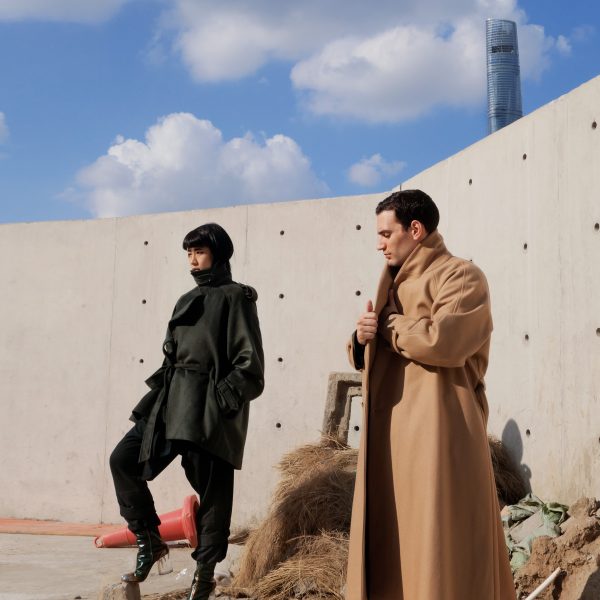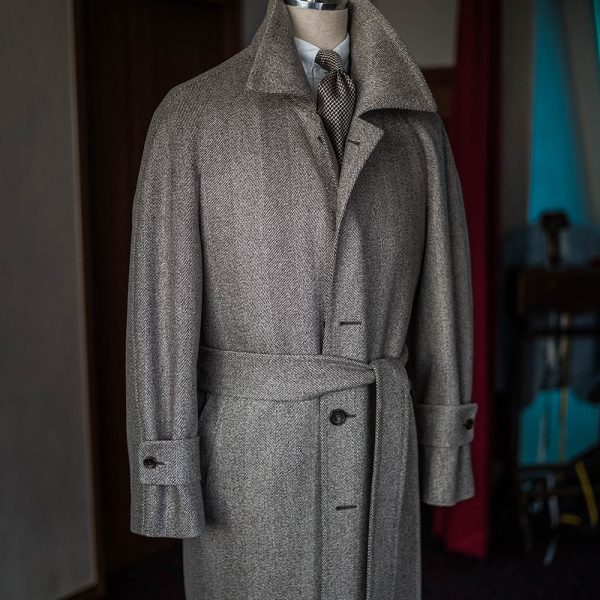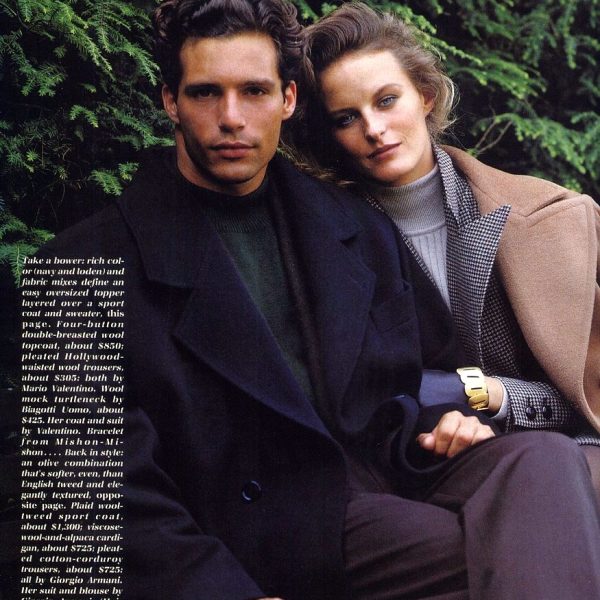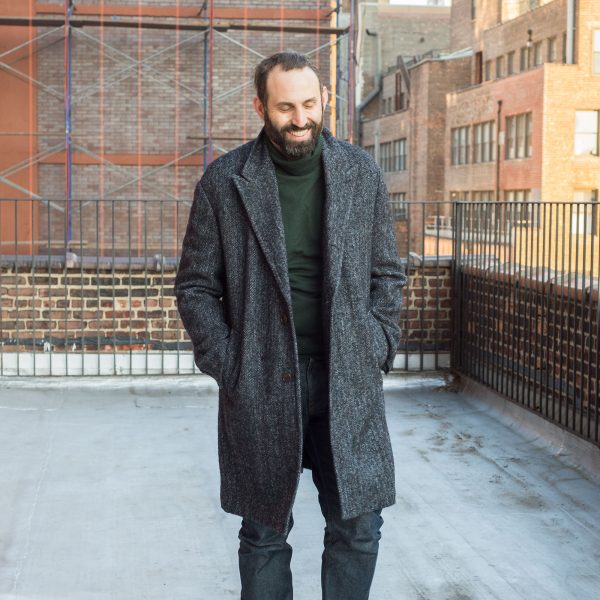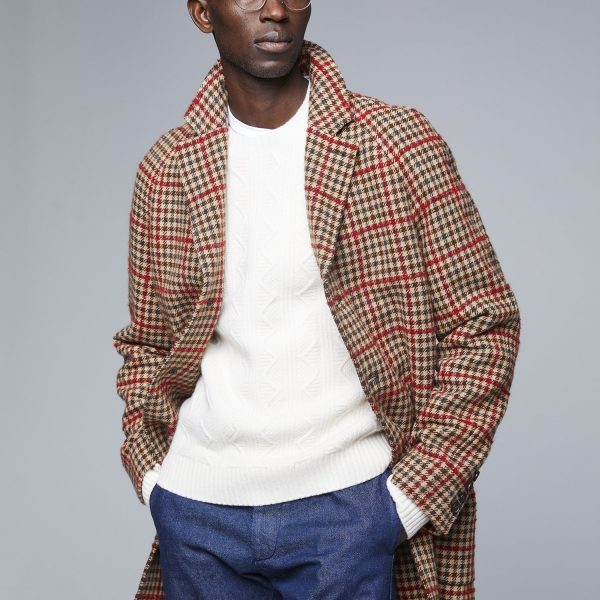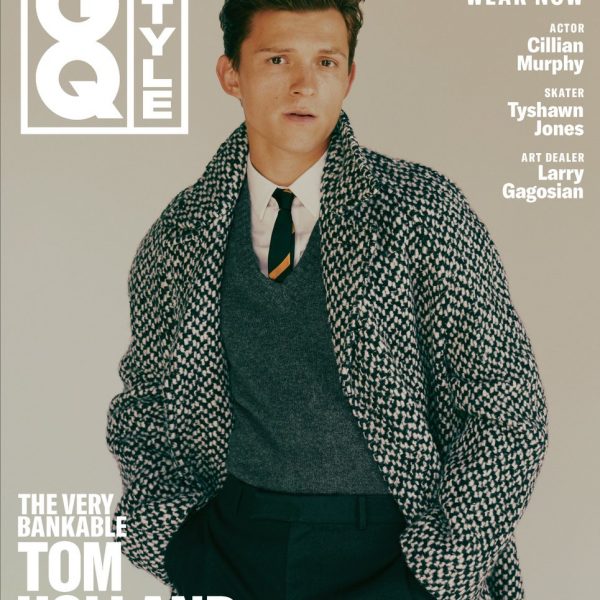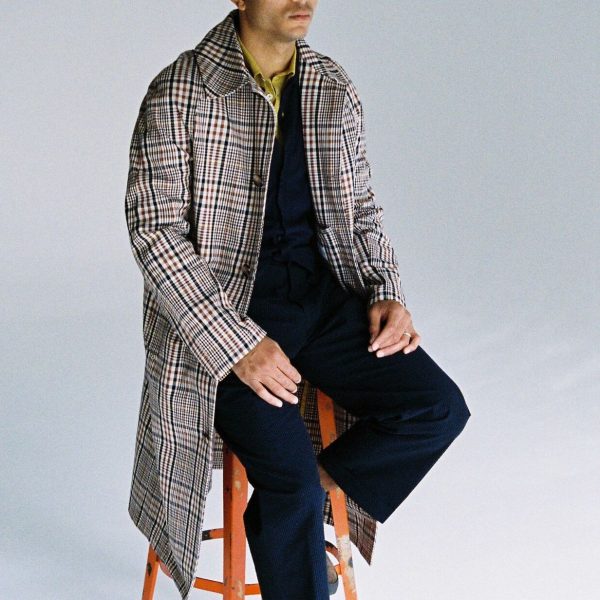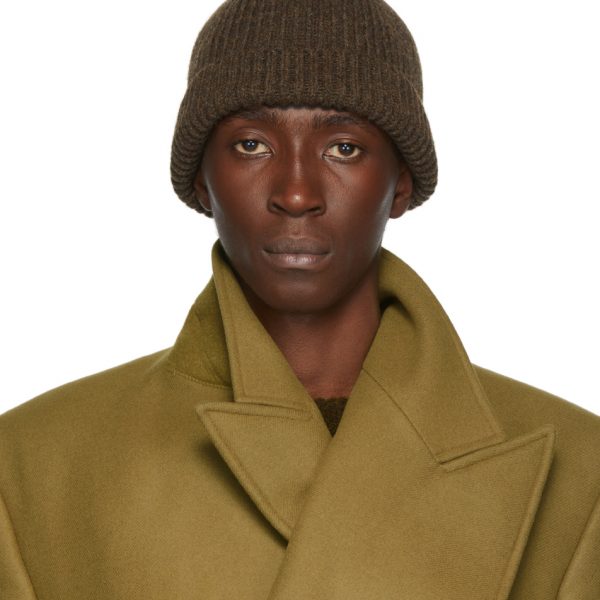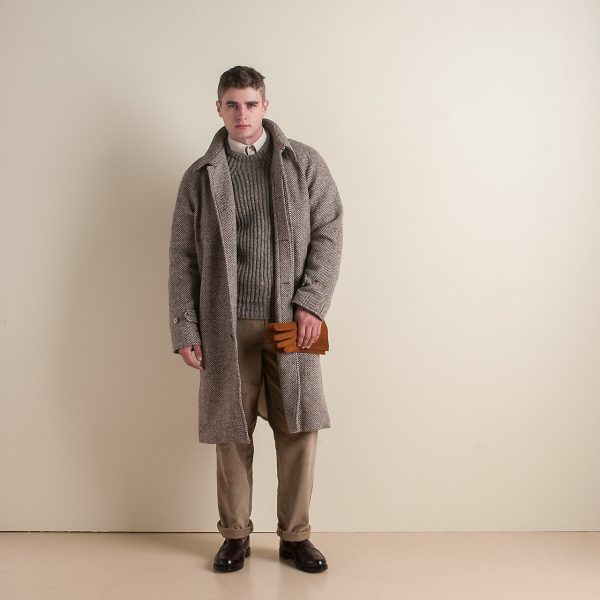
Men’s style has never been more factionalized. Whereas men once agreed on what they thought were The Good Clothes, today’s landscape is such that the ascendency of one look doesn’t necessarily displace another. Ten years ago, men rallied around Americana and denim, then prep and Italian tailoring. Now with a million style tribes, it’s hard to coalesce excitement around any one thing. There are streetwear and techwear, tailoring and normcore, the brutalist avant-garde and Japanese folk. Nothing is fully in or out.
There is, however, one small sliver of overlap: the classical overcoat, loose and slightly oversized, which has somehow managed to cut across style genres. Preps pair polo coats with tweeds and flannels. Streetwear aficionados have worn camelhair topcoats ever since Kanye sported his with suede Chelsea boots. Contemporary menswear guys, those of both maximalist and minimalist stripe, like theirs with sleek jeans and textured sweaters. Even workwear lines such as RRL offer the occasional belted duster or tweed.
These are not just superficial overlappings, either. As men’s style has started loosening up, both fashion-forward guys and classic menswear enthusiasts have found common ground on how they think a coat should fit. Whereas traditional overcoats once seemed out-of-touch, shoulder-hugging coats now look out-of-date. Classic overcoats right now are the one thing we can all agree on.
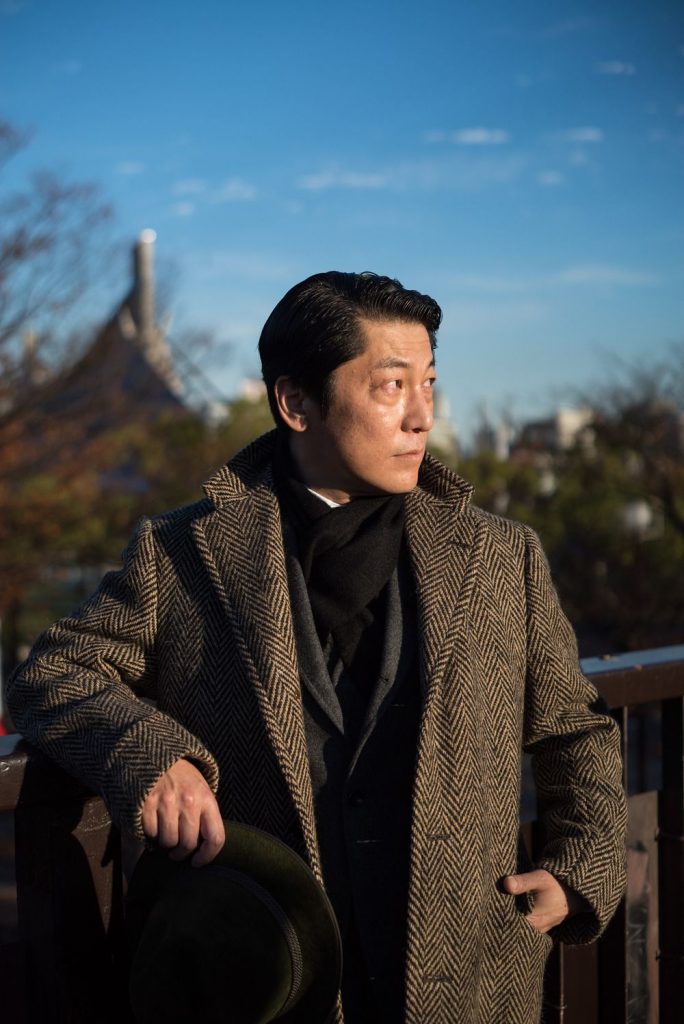
Aside from a serious suit and the things you’d need to wear with one, we don’t really call anything a wardrobe essential. But an overcoat is pretty useful. In today’s dressed-down world, it’s a good way of getting some of the benefits of tailoring without looking overly dressed up. They’re typically unstructured, so they don’t have the shoulder-defining look of a suit jacket, but they have face-framing revers and the general sensibility of tailoring. With a suit, a long overcoat can feel commanding and authoritative. With a chunky sweater and some jeans, they can add a touch of sophistication to an otherwise casual ensemble.
A good overcoat can also be a do-all in your wardrobe. Granted, you can’t really wear one indoors for too long, unlike a sport coat or some casualwear, but it’s great for most other things. It’s something you can wear to nice parties and special dinner outings, but also be a practical piece for running errands. It folds up well and can be a travel companion. It’s classic without being fusty; contemporary without being challenging.
It would be hard to find a wardrobe that couldn’t benefit from having a topcoat (assuming you live in a climate that justifies one). Some examples:
- Trad/ Classic: Pair a topcoat with a tweed sport coat, woolen flannels, and an oxford button-down. If you want something a little more dressed down, you can do flat-front chinos and a Shetland sweater. As usual, make sure the colors and textures contrast.
- Contemporary: If you’ve ever wondered how to make a pair of wide-legged trousers work, just throw them together with a textured sweater and a topcoat — the topcoat elongates the silhouette and brings everything together. Just get a chunky enough pair of shoes to help balance out the pants. Alternatively, you can go for something a little more conventional by wearing dark slim-straight jeans, a chunky Aran, and sneakers (I prefer simple high-tops with this stuff, but use your eye). Most of the photos above are contemporary in some way.
- Workwear: Brands such as RRL will have workwear-y topcoats — things made with vintage details and/ or take inspiration from military styles, such as the WWII despatch coat. But you can even make a simple, tweedy topcoat work with things such as 14oz raw denim and guernsey sweater. I find chunky turtlenecks and heavy boots (such as Alden’s Indy) work well for guys who are more accustomed to a rugged look.
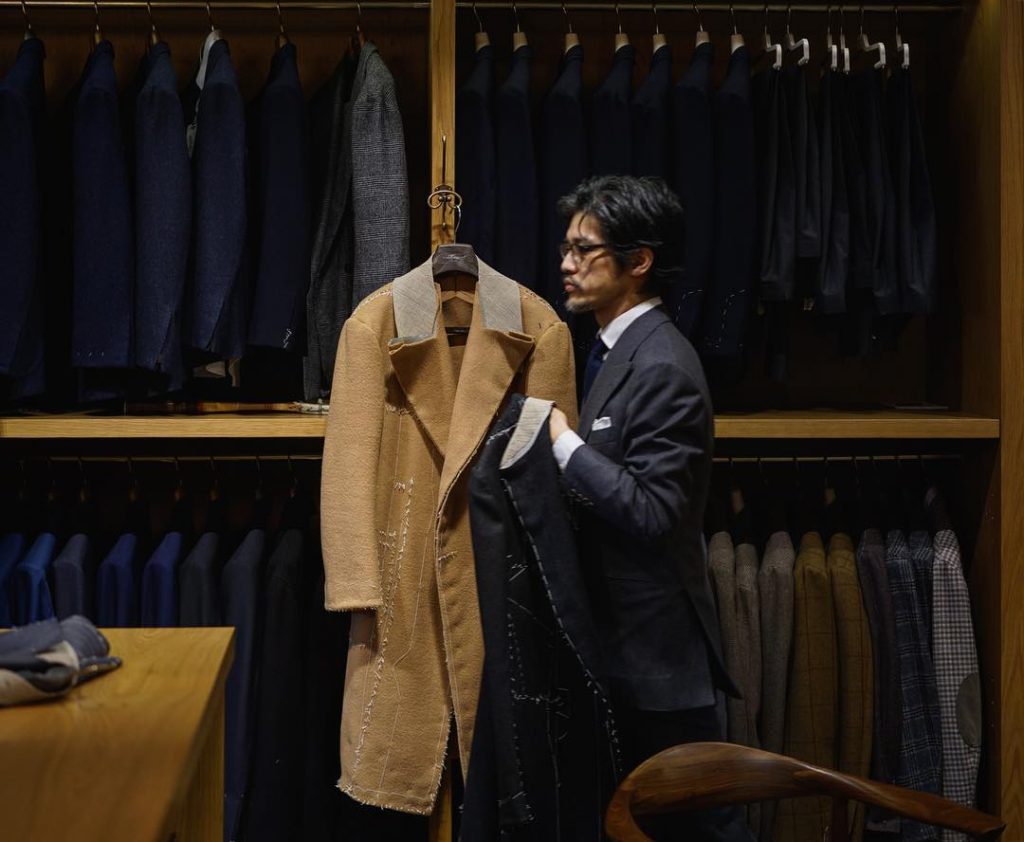
Things to Look For When Shopping
Shoulders: There are two types of shoulders. The first is what’s known as a set-in sleeve, which means the sleeves are inserted into the armhole, as you’d find on your dress shirts. These will leave a shoulder seam at the end of your shoulder bone. The second treatment is known as raglan, which means the sleeve runs continuously up your arm and then shoulder.
When shopping for a topcoat, pay attention to how these different sleeve and shoulder treatments affect the silhouette. A set-in sleeve will give you a relatively stronger, T-shaped figure because the shoulder seams help define your shoulder joints. A raglan sleeved coat, on the other hand, will typically be rounder and more relaxed looking. Neither is better or worse; it’s just personal preference. For what it’s worth, raglan sleeved coats are often easier to fit since you don’t have to be exacting about the shoulder seam.
Silhouette: I prefer overcoats that are long and roomy. Get something that ends at about your knees if you want a classic silhouette that sways more when you walk. A trimmer topcoat that’s mid-thigh, on the other hand, will look a bit younger and more modern (although, many cutting edge designers pieces are starting to fill out now anyway). One of the upsides to wearing a shorter topcoat is that it won’t get in the way when you sit down.
Balance: In tailoring, balance refers to how a coat hangs off your shoulders. The most important aspect is what’s known as the “front-back balance,” which is the relation of the front of your hem to the back. You want to think of this like a finely tuned measuring scale. When viewed from the side, the front of your hem should be even or slightly lower than the back. If it rides up, the coat simply doesn’t fit and it’ll be expensive to alter. Ignore this and the coat won’t hang properly. Balance is especially important for overcoats since small distortions can become glaringly obvious. If the coat is swinging just one degree inward, the effect will look exaggerated on a long garment.
Collar: Not all collars can be worn up – a lot depends on the material and cut – but see how a coat looks when you pop the collar from the back. Doing so can be a nice way to help frame your face. Sometimes a coat can look boring when worn one way, but come into its own when you adjust this detail.
Single Open, Double Closed: Some coats simply look better when worn open. If you’re live in a really cold environment, and think you’ll often fasten your jacket, check out how it looks both ways. Generally speaking, I find single-breasted jackets look better worn open, double-breasted jackets are better closed. Obviously, if it’s frigid out, you should fasten whatever you’re wearing. There’s practical dimension here that’s just plain common sense, but it’s good to be aware of how the coat is best styled.
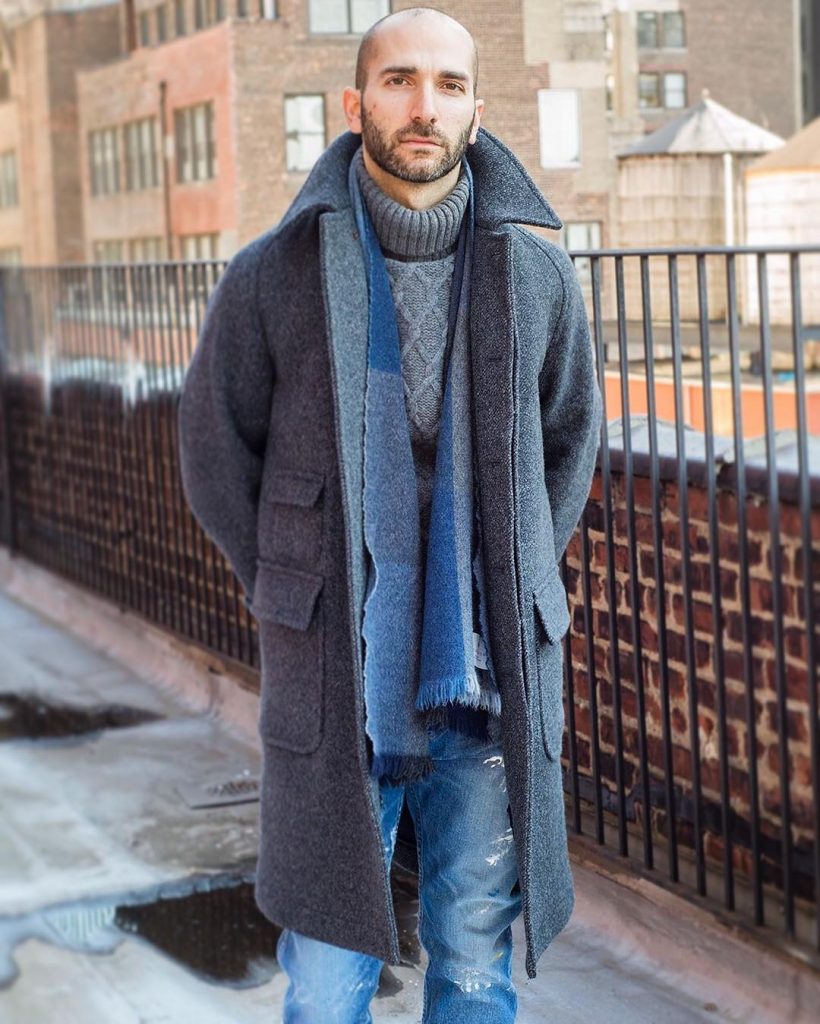
Where to Buy
On the classic end, I like shops such as O’Connell’s, Ben Silver, Ralph Lauren, Cordings, and The Armoury. The Armoury has a couple of house-line models made by Ring Jacket in Japan. I also love their line from Coherence, a Japanese label that’s reintroducing classic outerwear worn by previous generations’ style icons, artists, and intellectuals. Their coats have these beautifully full silhouettes, much like yesteryear’s models, but the fabrics are often updated in a way that allows for better performance against the elements. Sweden’s Country Sports also has some great looking stuff, including from one of my favorite British brands, Chrysalis. Additionally, I’ve been eyeing Robert Stolz’s long Loden overcoats, a style that can be difficult to find.
For something slightly more casual and modern, check Todd Snyder, Private White VC, Camoshita, and De Bonne Facture. It’s a bit early in the season, but Drake’s and Berg & Berg are usually good for this sort of thing (neither shop has overcoats right now, but they probably will in about a month or so). If I can recommend one model, however, it’d be Kaptain Sunshine’s traveler coat, which is a raglan-sleeved model with a cheeky patch pocket at the hip, equestrian-styled leg straps hidden inside, and a collar that looks tremendous when popped from the back (the coat is pictured above). No Man Walks Alone will carry it in two colors this season.
For a budget-friendly option, check your local thrift. The good news is that classic overcoats haven’t changed much over the years, and their sturdy construction means you can find them in thrift shops for pennies on the dollar (see our thrifting guide). Years ago, I bought a Ralph Lauren overcoat – originally made for Wilkes Bashford – for about $75. If you’re looking to get a classic overcoat this season, but aren’t trying to break the bank, you can probably find something local if you spend a few weekends hunting around.
When thrifting, know what can be easily altered and repaired. Depending on the coat’s design, you can shorten the length, nip the waist, and adjust the sleeves without too much trouble. If you plan to wear this over a suit jacket or sport coat, make sure there’s enough room in the chest and shoulders to accommodate for one – those areas aren’t easily let out. If you see moth holes, those can be rewoven in a way so that you don’t notice the repair, but skilled work can be expensive. If your heart is set on something, companies such as at The French American Reweaving Company, Without a Trace, and Best Weaving & Mending are known for their quality repair work.
